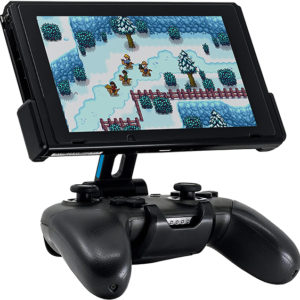Streaming Your Media All Over Your House: How NAS4Free Is Making The Future Now

Network Attached Storage: The Basics
If you haven’t heard of ‘Network Attached Storage’, let me enlighten you. You know how when you want that piece of music – you know, the one that’s not on your phone – or if you want to watch that movie (the one you forgot to pop on your tablet, naturally) the only solution is to boot up the PC, plug in your device and manually transfer it across?
Or maybe you forgot to do that manual backup and now your computer’s on its last legs. But where’s that damn portable drive? Never where you are, that’s where.
Network Attached Storage – that’s ‘NAS’ for short – is a timely, cost-effective, and futuristic solution to these little quandaries. In this pair of articles, we’re going to look at what it is, what you need to make it work, and how you can get to setting it up for yourself – for as low a cost as possible.
It’s worth mentioning at this point that you don’t have to set this up yourself. There are a number of commercial suppliers who can provide Network Attached Storage all ready to go. If you’re a business, rather than a casual user with a penchant for making stuff, I would advise against home-brewing your hardware. Invest in a commercial solution instead.
What’s NAS?
NAS follows the Ronseal School of Product Naming – that is, it does pretty much what it says on the tin. ‘Storage’ is what holds your data. In your computer, that’s probably a Hard Disk Drive (HDD). If you’ve got a snazzier one, it’ll be a Solid State Drive (SSD: a bit faster). Your ‘network’ is likely to be a wired or wireless home connection to share your internet through the house. ‘Attached’? That’s a cable.
So, put them together and we have this – a drive to store your data, hooked up to your wireless or wired network. That actually sounds pretty handy. Instead of traipsing to the computer to transfer those files across manually, we could access them through our network (perhaps with the help of an app or two). So what do we need to accomplish this?
What do I need?
This article is going to use a free stripped-down version of FreeBSD, a low-requirement Operating System (OS). Our pseudo-OS is called ‘NAS4Free’. It’s a continuation of the FreeNAS project, which aimed to help convert any piece of basic hardware (a.k.a. a cheap, old computer) in to the perfect NAS. In addition to this software, you’re going to need some basic hardware. NAS4Free does a good job of supporting a range of machines, but if you want a more comprehensive list, Google for ‘nas4free_users_hardware’.
You’re also going to need a good-sized USB stick. If you have one that’s 1GB (one Gigabyte) plus, you’re sorted.
Getting ready
First step is making sure we know where to go to get extra help. The NAS4Free community is broad and knowledgeable, and quite used to the less tech-savvy making requests for help. NAS4Free have their own forums – again, Google for ‘NAS4Free forum’ (you’ll need to get a SourceForge membership, which is free of charge and gives you a great platform for diving in to the open source development world) as well as their own IRC channel. Next up, we’ll look at the nitty gritty of the install itself.




1 thought on “Streaming Your Media All Over Your House: How NAS4Free Is Making The Future Now”